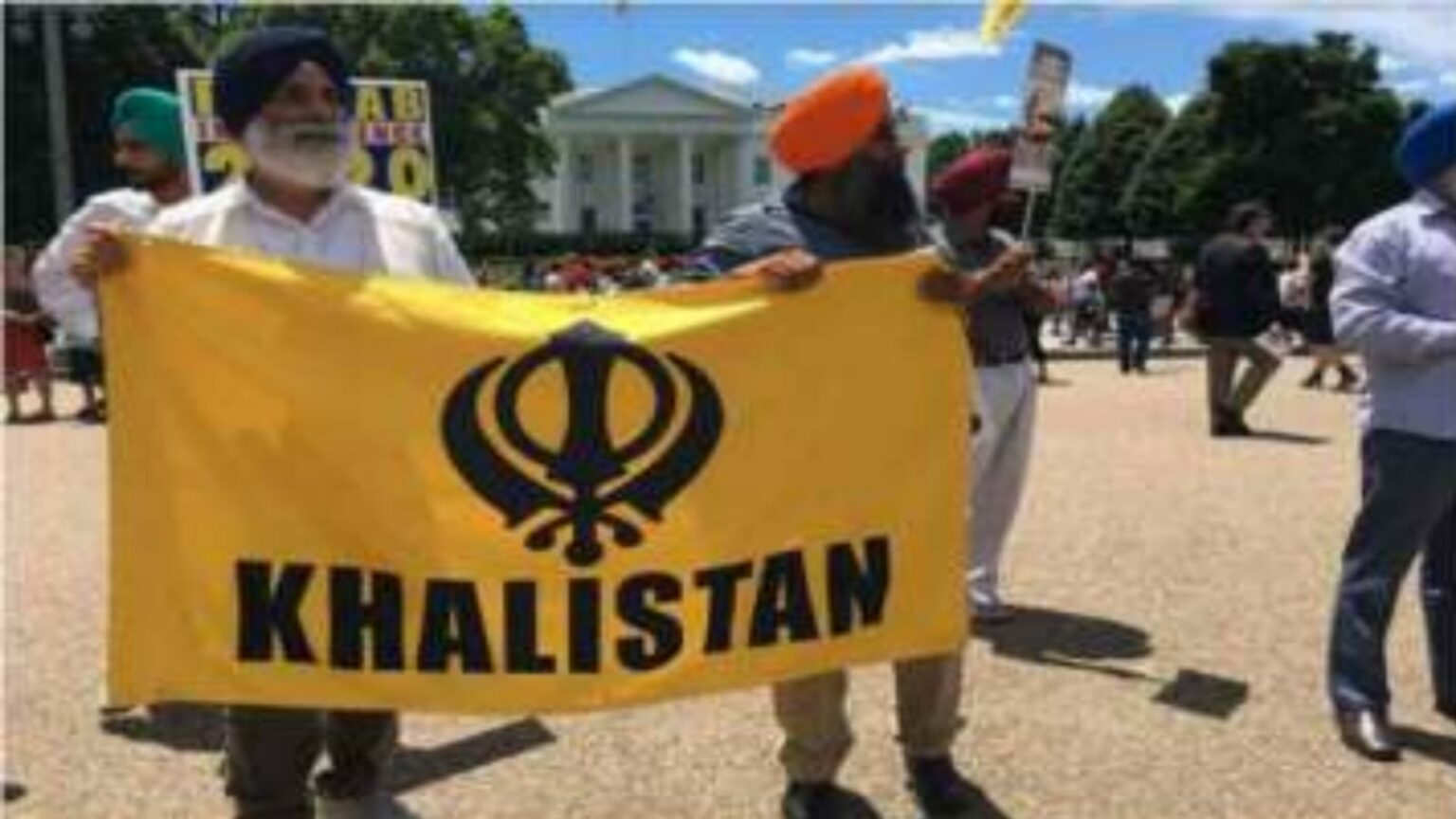The separatist groups supporting the Khalistan movement celebrated the “Anniversary of the Declaration of Sikh Independence” backed by the administration of the state of Connecticut, US.
Last week, the state of Connecticut in the US released a citation that recognised the 36th anniversary of the Declaration of Sikh Independence. The State of Connecticut congratulated the World Sikh Parliament on the 36th anniversary of the Historic Resolution passed on April 29th, 1986.
On the other hand, the Indian consulate in New York deeply condemned the citation. Further, it is alleged to be some mischievous act in the name of the Assembly for their sinful purpose.
Above all, these separatist groups are gaining ground in the USA with the help of Pakistani funding. American experts allege that Pakistan is allegedly helping these separatist groups in Pakistan. Moreover, the US government is well aware of the situation. However, it has remained silent over numerous appeals made by New Delhi to take some serious action on the anti-Indian activities.
A study by the Hudson Institute on America’s constant support for Khalistan.
A recent report from the Hudson Institute explains the conduct of “Khalistan and Kashmir separatist groups in the United States.” The report is titled “Pakistan’s Destabilization Playbook: Khalistani Activism in the US.”
The report suggests links between Pakistan and these separatist movements that are gaining ground on American soil. According to this report, like the Pakistan-based Islamist terrorist groups, the Khalistan groups can also emerge with different names.
However, the US government appears unconcerned about the situation. Most importantly, Khalistan’s most passionate supporters are present in the US, UK, and Canada. The report also mentioned that until and unless the American government finds out and recognises this Khalistan militancy and terrorist activities on their soil, it is difficult for India to control the violent activities prevailing in Punjab. It said, “One seldom finds what one is not looking for.”
Birth of the Khalistan movement
The demand for Khalistan, a separate Sikh nation, emerged after the Independence of India in 1947. The demand of the Sikhs was divided into two territories; one went to Pakistan and the other came to India. But the Punjabi Suba Movement wanted the separation of the entire Punjab territory to be divided on linguistic grounds within India. However, the Indian government continued to refuse this demand till 1966, when the Indira Gandhi government divided the entire Punjab region into 3 parts. The Punjabi-speaking area became Punjab, the other Hindi-speaking area became Haryana, and both the states had a common capital, which was also the Union Territory. Furthermore, another part of the Punjab province that was covered in mountains was named Himachal Pradesh.
However, the Sikhs were unhappy with the decision when, in 1973, the Sikh community asked for autonomy for the state of Punjab. They formed the Anandpur Sahib Resolution, which found great support in Punjab. One of them was Jarnail Singh Bhindranwale. He later joined the Akali Dal to start a civil disobedience movement against the government. To further his cause, Bhindranwale is alleged to have killed around 32 Hindus.
To escape the charges, he took shelter in the Golden Temple of Amritsar. The Indian government did not act for 2 years, and finally, in 1984, Indira Gandhi launched Operation Blue Star. She ordered the military to storm the Golden Temple and stop the militant operations continuing in the Golden Temple. The operation continued for 10 days. In these 10 days, 83 soldiers and 493 militants were killed, and 294 people were injured.
Shortly afterward, Indira Gandhi was assassinated by her own Sikh bodyguards. This was followed by the Anti-Sikh Rights Act, in which around 8000 Sikhs were killed. The factual number is still unknown. Moreover, for the next 20 years, Punjab was pushed into violent turmoil. Many attacks followed, protests turned violent, and many separatists took shelter outside India.
How do Khalistan supporters’ function outside India?
Currently, the Khalistan movement can be seen in the US, the UK, Canada, and even some parts of Germany. The Khalistan movement started escalating in the west as they found safe havens. The supporters of Khalistan worship the militants who died during the insurgency and term them as martyrs.
In the US, the Sikhs formed a group called Sikhs for Justice that supported the secession of Punjab from India as Khalistan. The leader of the Sikhs for Justice is Gurpatwant Singh Pannu. The leader demands Khalistan, whose headquarters are based in Lahore.
This somewhat clears up the picture of the mastermind behind this cause. It is worthy to note that in 1971, the Prime Minister of Punjab, Zulfikar Ali Bhutto, stated that he would tear off one such part of India to avenge the loss of East Pakistan. There are reports that suggest Pakistan is funding the Khalistan movements in the US, Canada, and UK. Furthermore, the same Pakistan also ignites the demand for a free Kashmir as well in these areas.
However, the previous government of Pakistan played really well by reopening the Kartarpur corridor for the Sikhs in 2019. The inauguration was attended by many Indian politicians, but they were accompanied by pro-Khalistan supporters. It is clear that what Indians saw as the pilgrims’ corridor was seen as the “Khalistan Corridor” by Islamabad.
But most importantly, it should be noted that Indian Sikhs do not demand a separate nation. It would be wrong to identify every critic as a Khalistan supporter. By doing so, we would just make it easier for India’s adversaries to take advantage of the division. The contribution of the Sikh community to the Indian military is centuries old, and they have all the right to demonstrate criticism.
Published by: Diwakar Kumar
Edited by: Aaradhana Singh













